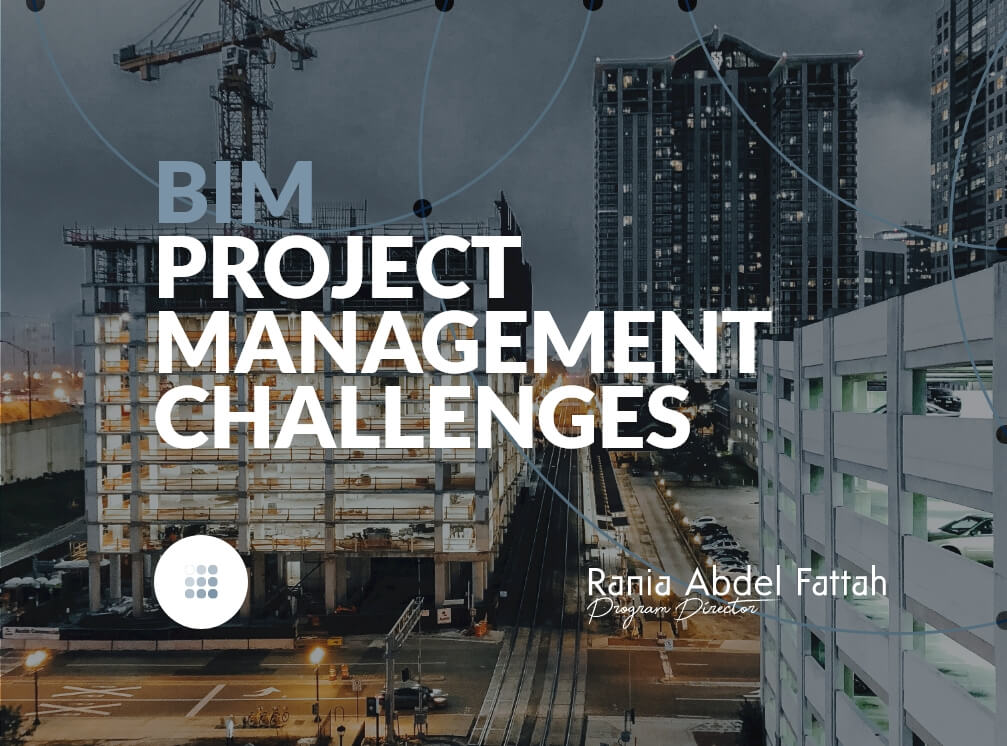
Rania
BIM and Lean Construction: A Powerful Combination for Project Management
In today’s rapidly evolving construction industry, two methodologies have emerged as game-changers: Building Information Modeling (BIM) and Lean Construction. These innovative approaches have revolutionized project management, streamlining processes and improving overall efficiency. By combining the power of BIM and Lean Construction, project managers can achieve remarkable results. In this article, I will provide an in-depth exploration of both BIM and Lean Construction, their benefits, successful case studies, key principles for integration, supporting tools and technologies, challenges, and available training resources.
What is BIM and how does it enhance project management?
Building Information Modeling (BIM) is a digital representation of a construction project that encompasses its physical and functional characteristics. It enables project teams to collaboratively plan, design, and construct a facility in a virtual environment. BIM provides a comprehensive and real-time view of the project, allowing stakeholders to make informed decisions throughout its lifecycle.
BIM enhances project management by facilitating effective communication and coordination among all stakeholders. With BIM, project managers can easily share and access accurate information, reducing errors, rework, and conflicts. The 3D visualization capabilities of BIM enable better design evaluation and clash detection, minimizing construction delays and cost overruns. Additionally, BIM fosters better construction sequencing and resource allocation, leading to improved project timelines and budget control. Overall, BIM empowers project managers with the tools they need to optimize project outcomes.
What is Lean Construction and how does it improve project efficiency?
Lean Construction is a philosophy and set of principles aimed at maximizing value and minimizing waste in construction projects. It focuses on eliminating non-value-added activities, enhancing productivity, and improving overall project efficiency. Lean Construction emphasizes collaboration, continuous improvement, and the elimination of inefficiencies through a systematic and data-driven approach.
Lean Construction improves project efficiency by promoting effective communication and collaboration among project teams. It encourages the early involvement of key stakeholders, fostering a culture of cooperation and shared goals. Lean principles such as just-in-time delivery, pull planning, and waste reduction enable streamlined workflows and resource optimization. By eliminating waste in the form of excessive inventory, waiting time, and unnecessary movement, Lean Construction minimizes project delays, reduces costs, and improves productivity. Through its emphasis on continuous improvement, Lean Construction empowers project managers to drive efficiency gains and deliver projects on time and within budget.
The benefits of combining BIM and Lean Construction in project management
When BIM and Lean Construction are combined, project managers can harness the full potential of both methodologies, leading to numerous benefits. The integration of BIM and Lean Construction enables enhanced collaboration and communication among project teams, ensuring that everyone is working towards the same goal. This alignment minimizes conflicts and delays, resulting in improved project outcomes.
The combination of BIM and Lean Construction also enables better decision making through real-time access to accurate information. BIM provides a centralized platform for storing and sharing project data, ensuring that all stakeholders have access to the most up-to-date information. With this comprehensive view, project managers can make informed decisions, identify potential issues early on, and implement proactive measures to prevent problems.
Moreover, the integration of BIM and Lean Construction facilitates more efficient resource allocation and construction sequencing. BIM’s 3D visualization capabilities enable project managers to optimize the utilization of resources and identify potential clashes before they occur. Through Lean Construction’s waste reduction principles, project managers can eliminate bottlenecks and inefficiencies, leading to improved project timelines and cost control.
Case studies showcasing successful implementation of BIM and Lean Construction
Several case studies illustrate the successful implementation of BIM and Lean Construction in project management. One notable example is the construction of the Shanghai Tower in China. By adopting BIM and Lean Construction principles, the project team achieved remarkable results. The integration of BIM facilitated effective coordination among various trades, resulting in a streamlined construction process. Lean Construction principles, such as pull planning and waste reduction, enabled the project team to achieve a significant reduction in construction time and costs.
Another case study is the expansion of the Denver International Airport. BIM was instrumental in coordinating the complex construction activities, ensuring that all stakeholders were on the same page. By integrating Lean Construction principles, the project team achieved a high level of efficiency and productivity. Pull planning and continuous improvement practices eliminated waste and improved overall project performance.
These case studies demonstrate the transformative power of combining BIM and Lean Construction in project management. They highlight the benefits of enhanced collaboration, improved decision making, and optimized resource allocation.
Key principles and strategies for integrating BIM and Lean Construction
To successfully integrate BIM and Lean Construction, project managers should adhere to key principles and strategies. First and foremost, fostering a culture of collaboration and communication is essential. All project stakeholders should be encouraged to actively participate in the BIM and Lean Construction processes, sharing their expertise and insights. Regular meetings and workshops should be organized to ensure effective coordination and alignment.
Secondly, project managers should establish clear goals and objectives for the integration of BIM and Lean Construction. This includes defining key performance indicators and metrics to track project progress and success. By setting measurable targets, project managers can evaluate the effectiveness of their integration efforts and make necessary adjustments.
Additionally, project managers should invest in the necessary training and education to ensure team members have the skills and knowledge required for successful implementation. Training programs focused on BIM and Lean Construction principles, as well as the use of supporting tools and technologies, should be provided to all relevant personnel.
Lastly, project managers should continuously evaluate and improve their integration strategies. Regular assessments of the integration process will help identify areas for improvement and refine implementation strategies. By embracing a culture of continuous improvement, project managers can maximize the benefits of combining BIM and Lean Construction.
Tools and technologies that support the combination of BIM and Lean Construction
Several tools and technologies support the combination of BIM and Lean Construction, enabling project managers to achieve optimal results. BIM software, such as Autodesk Revit, provides the platform for creating, managing, and sharing BIM models. These models serve as a centralized repository of project information, enabling effective collaboration among project teams.
Lean Construction software, such as Last Planner System, supports Lean principles and facilitates efficient project planning and management. This software enables project managers to create detailed schedules, track progress, and identify bottlenecks. By visualizing the project timeline and identifying potential constraints, project managers can implement proactive measures to ensure smooth project execution.
Furthermore, cloud-based collaboration platforms, such as BIM 360, enable real-time access to project data from anywhere and at any time. These platforms facilitate seamless communication and coordination among project teams, regardless of their physical location. By leveraging these tools and technologies, project managers can optimize the integration of BIM and Lean Construction.
Challenges and considerations when implementing BIM and Lean Construction together
While the combination of BIM and Lean Construction offers numerous benefits, it is not without its challenges. One significant challenge is the complexity of integrating two distinct methodologies. Project managers must ensure that the integration process is well-planned and executed, taking into account the unique requirements of both BIM and Lean Construction.
Another challenge is the need for skilled personnel who are proficient in both BIM and Lean Construction. Finding individuals with expertise in both areas can be difficult, requiring targeted recruitment and training efforts. Project managers should invest in the development of their team members’ skills, ensuring they have the necessary knowledge to successfully implement the integration.
Additionally, the cost of implementing BIM and Lean Construction can be a barrier for some organizations. The initial investment in software, training, and infrastructure can be significant. However, project managers should consider the long-term benefits and return on investment when evaluating the cost-effectiveness of the integration.
Training and resources for mastering BIM and Lean Construction in project management
To master BIM and Lean Construction in project management, project managers can avail themselves of various training and resources. Professional organizations, such as the Lean Construction Institute (LCI) and the BuildingSMART alliance, offer certifications, workshops, and conferences focused on BIM and Lean Construction.
Online platforms, such as Coursera and Udemy, provide a wide range of courses on BIM and Lean Construction principles, tools, and techniques. These courses offer flexibility and convenience, allowing project managers to learn at their own pace and from anywhere in the world.
Furthermore, industry publications, such as the Journal of Construction Engineering and Management and the International Journal of Construction Management, provide valuable insights and research findings on BIM and Lean Construction. By staying up-to-date with the latest industry trends and research, project managers can continually enhance their knowledge and skills.
Conclusion: Embracing the power of BIM and Lean Construction for successful project management
In conclusion, the combination of BIM and Lean Construction represents a powerful approach to project management. By integrating these methodologies, project managers can unlock the full potential of their projects, achieving enhanced collaboration, improved decision making, and optimized resource allocation. While implementing this integration may come with challenges, the benefits far outweigh the costs. By investing in training, utilizing supporting tools and technologies, and fostering a culture of continuous improvement, project managers can master the art of BIM and Lean Construction in project management. Embracing this powerful combination will undoubtedly lead to successful project outcomes and propel the construction industry forward.
To learn more about BIM and Lean Construction, explore our comprehensive training programs and resources on Smart BIM Programs.



